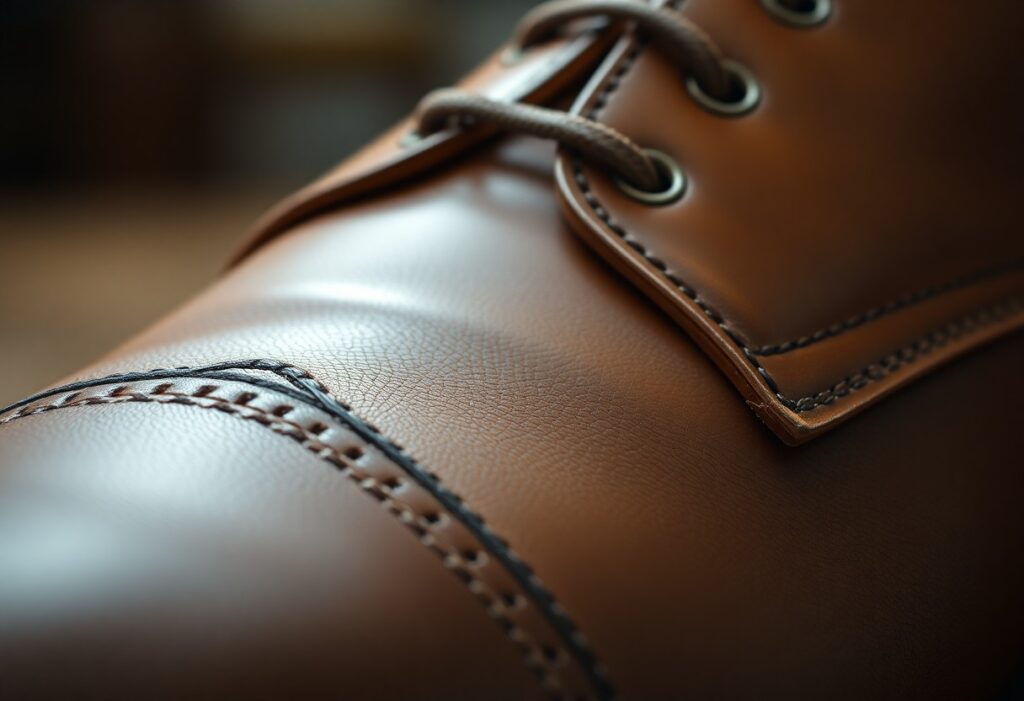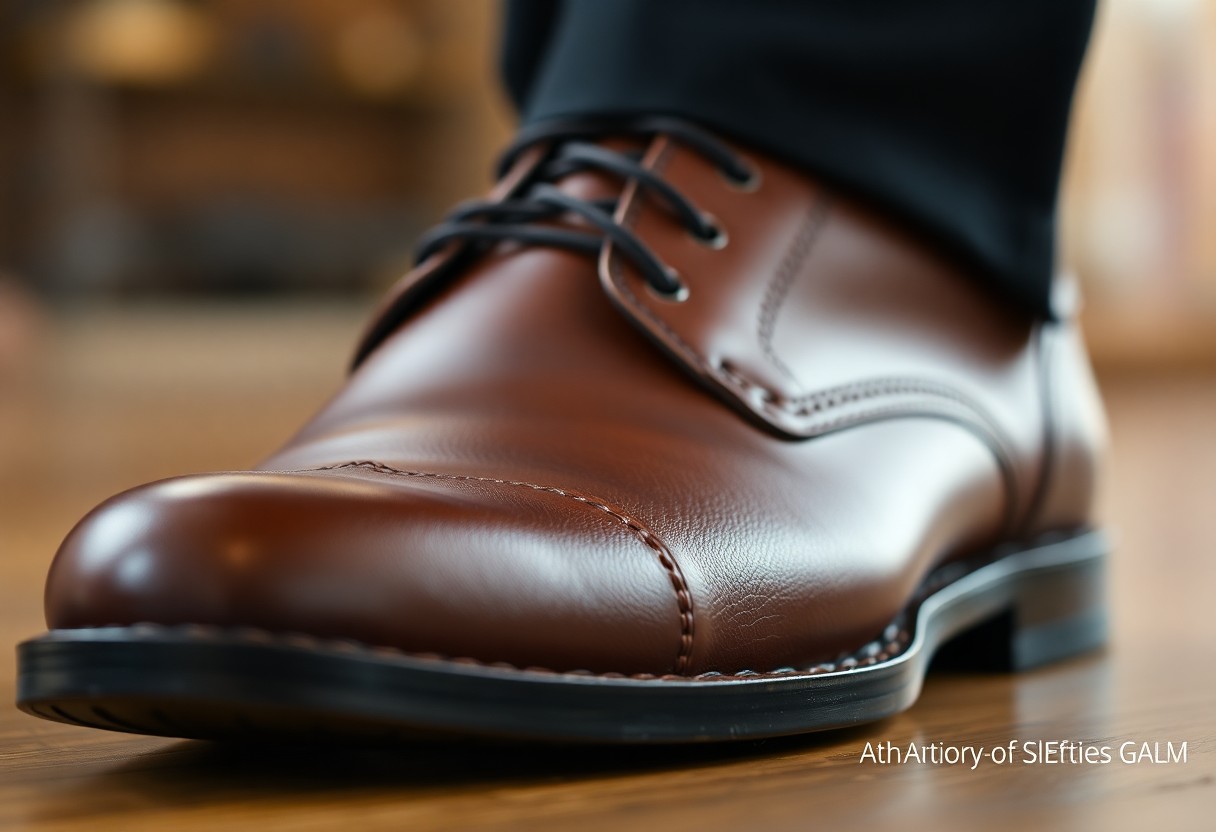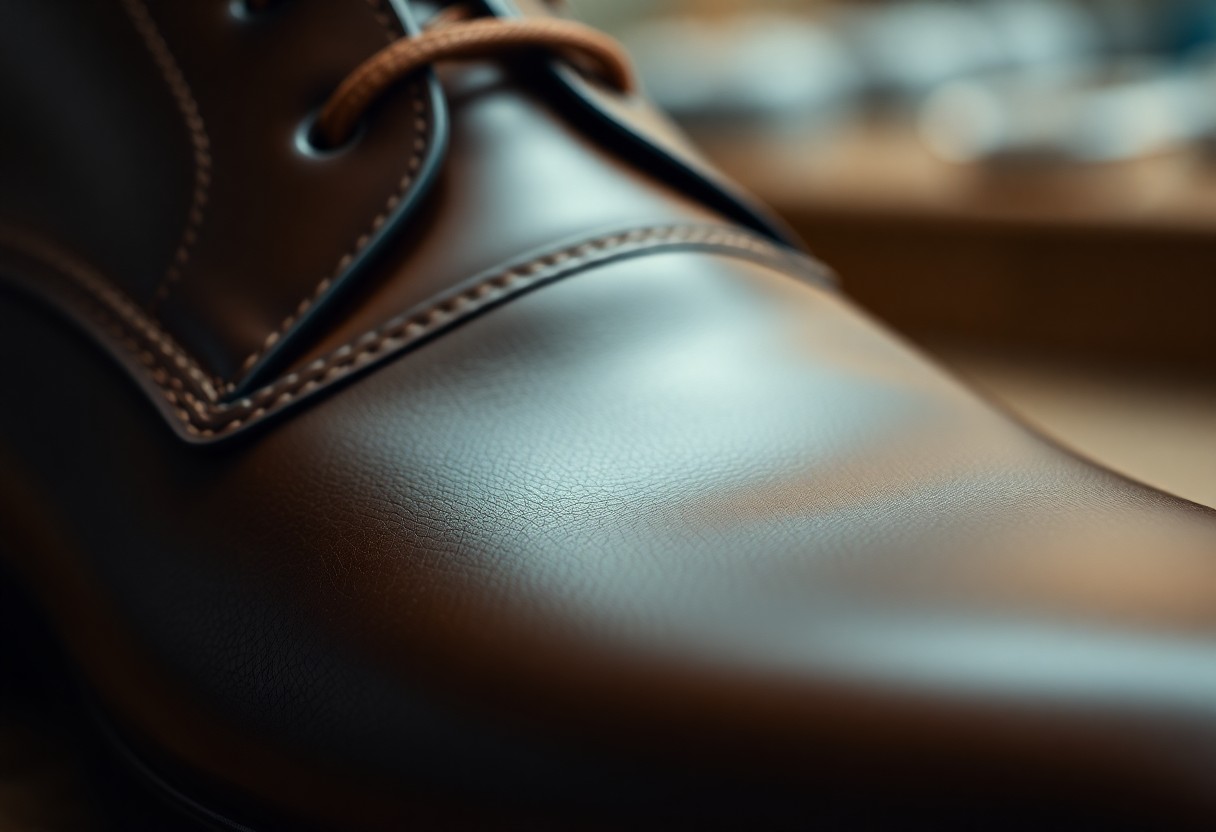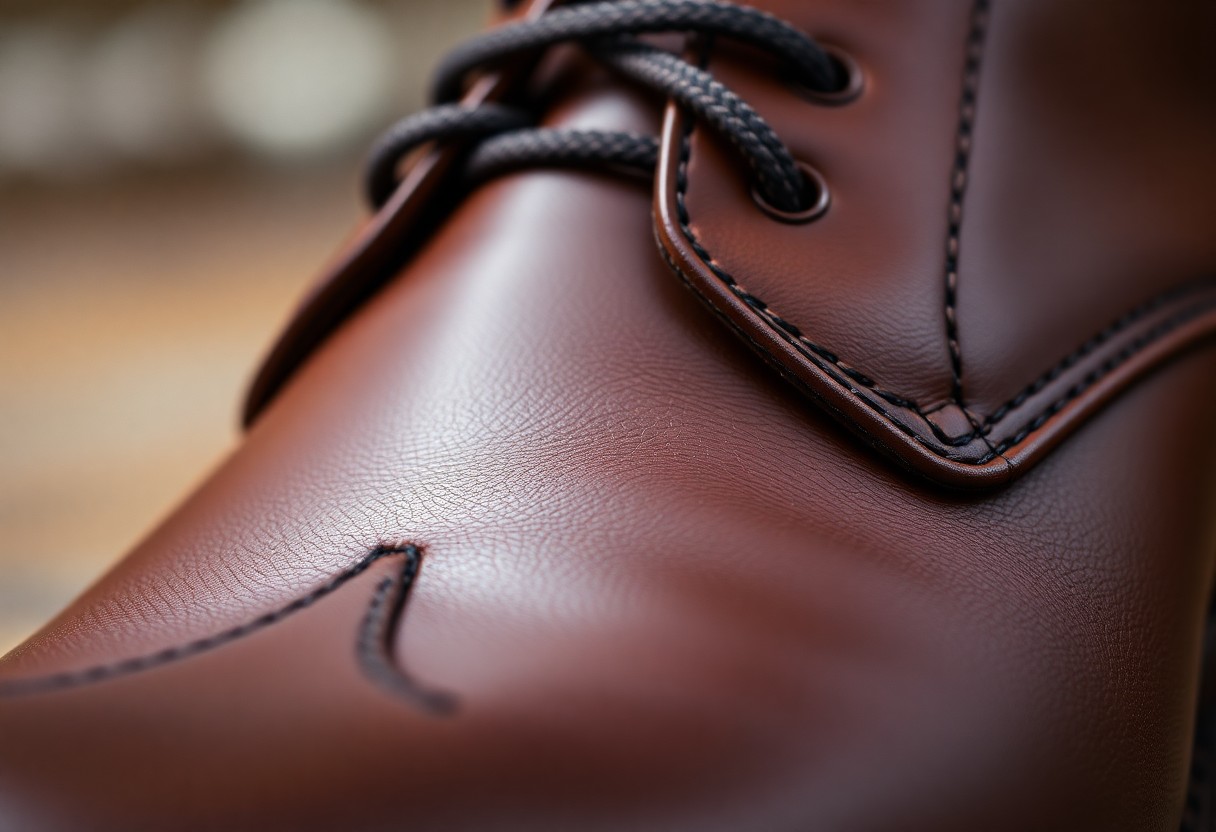
For many shoe enthusiasts, the distinctions between apron front and split toe seam variations can be quite perplexing. Gaining insight into these design features is vital, as they represent core attributes that influence the quality and aesthetic appeal of your footwear. This extensive guide covers everything from the intricate pie crust stitching to the elegant reverse skin stitching, equipping you with the knowledge to recognize and appreciate the various seam types available. Whether you’re examining loafers or split toe derbies, your ability to identify exemplary craftsmanship relies heavily on your understanding of these unique characteristics. The construction techniques can differ significantly, ranging from basic machine-sewn seams to luxurious hand-stitched details that improve both functionality and visual appeal.
Explore the Distinct Features of Footwear Seam Types for Better Choices
Developing a comprehensive understanding of apron front and split toe seams is essential for recognizing quality in the art of shoemaking. These elements intricately blend functional and decorative features within shoe construction, which require specific techniques and tools to execute effectively. By familiarizing yourself with these foundational concepts, you will enhance your appreciation for the skilled craftsmanship involved, positioning yourself to make informed choices when selecting high-quality footwear. This knowledge will empower you to discern the subtle differences that elevate a shoe from ordinary to extraordinary, ensuring that your investment in footwear pays off over time.
Gain Clarity on Apron Front and Split Toe Definitions for Better Understanding
To fully comprehend these components, it’s crucial to understand that an apron front refers to the leather piece that elegantly forms the shoe’s tongue, extending gracefully towards the toe area. In contrast, a split toe design comprises two leather pieces that are seamlessly joined at the toe tip. Importantly, while a shoe can showcase an apron without incorporating a split toe, most split toe designs are accentuated by the presence of an apron. Recognizing these definitions will significantly enhance your appreciation for various shoe designs and their unique attributes, helping you to make more informed choices when shopping for quality footwear.
Essential Terminology for Understanding Shoe Craftsmanship
Familiarizing yourself with terminology such as pie crust stitching, skin stitching, raised lake, and round closing is vital. Your understanding of these terms will empower you to differentiate between various seam types and their respective construction techniques. Key vocabulary includes the term ‘lake,’ referring to the seam that connects the apron to the shoe, and ‘grain side,’ which designates the outer surface of the leather. Expanding your lexicon in this field will greatly enhance your ability to engage in discussions and practical activities related to these shoemaking techniques, ultimately leading to a deeper appreciation of the craft.
Basic terminology is fundamental; for instance, grasping the concept of the ‘lake’—the seam that links the apron to the shoe—is essential. Moreover, the term ‘grain side’ pertains to the outer surface of the leather. Your familiarity with these terms will not only broaden your knowledge but will also facilitate more meaningful discussions and practical applications regarding various shoemaking techniques. This foundational understanding will serve you well as you explore the diverse world of high-quality footwear.
Choosing Premium Materials and Tools for Seam Creation Success
To embark on your shoemaking journey successfully, you will need a minimal but essential set of equipment. This includes premium leather, appropriately sized needles, durable thread, and the necessary leatherworking tools. The overall success of your projects hinges on your careful selection of materials tailored to your specific design preferences. Choosing high-quality materials will lay a solid foundation for your craftsmanship, ensuring that your final product not only looks good but also performs well.
It is vital to equip yourself with the right tools, such as leather skiving knives, awls, and specialized needles that cater to your specific requirements. The thickness of the thread and the quality of the leather will significantly influence the final outcome of your work, making the selection of these materials paramount for effective seam construction. Investing in high-quality tools and materials will ultimately lead to more successful and satisfying results in your shoemaking endeavors.

Uncovering the Wide Range of Leather Seam Types in Footwear Crafting
In the realm of shoemaking, various leather seams come in a wide array of styles, each serving distinct purposes within shoe construction. The range of seam types extends from basic plain lapped seams to intricate round closing techniques. The choice of seam not only affects the shoe’s visual appeal but also its overall durability and functionality, impacting how the shoe performs over time. Understanding these differences will enable you to select the most suitable options for your footwear needs, ensuring both style and practicality.
| Seam Type | Primary Use |
|---|---|
| Plain Lapped | Basic upper construction |
| Raised Lake | Apron fronts |
| Split Raised | Decorative elements |
| Round Closing | Premium construction |
| Skin Stitch | High-end finishing |
Benefits of Single Piece Leather Seams for Enhanced Footwear Durability
As you delve into the world of single piece constructions, you will find that these seams offer clean lines and simplify the assembly process. The leather is folded and stitched in a continuous manner, significantly reducing weak points and creating a seamless appearance that enhances both durability and aesthetic appeal. This approach not only streamlines the construction process but also contributes to a more polished final product, making your shoes look and feel superior.
Exploring the Advantages of Two-Piece Leather Seams
When working with separate leather pieces, these seams require precise alignment and careful skiving techniques. Joining these pieces creates distinctive visual elements while ensuring the structural integrity of the shoe design. The two-piece construction enables greater design flexibility, allowing you to create intriguing pattern combinations that enhance visual appeal and contribute to the footwear’s overall durability when executed with precision. This versatility makes two-piece seams a popular choice among shoemakers aiming to craft unique and stylish footwear.
Utilizing two-piece constructions broadens your design possibilities, as it facilitates creative combinations of patterns and textures. When these techniques are executed with care, they can result in shoes that are not only visually captivating but also remarkably durable, ensuring a long-lasting product that withstands the test of time. This balance of aesthetics and functionality is crucial for those in pursuit of high-quality footwear.

Your Complete Guide to Mastering Seam Construction Techniques
While mastering the methods behind apron front and split toe seams may appear daunting, achieving proficiency is possible through meticulous attention to detail and consistent practice. Your success will largely depend on following established procedures and employing the right tools at each stage of construction. By committing to the learning process and honing your skills, you can create footwear that not only meets but exceeds your expectations.
| Basic Tools | Special Equipment |
| Leather needle, Thread, Awl | Skiving knife, Punching tool |
Preparation and Strategic Planning for Successful Seam Construction
Preparation is critical in ensuring successful seam construction. You must accurately mark your stitching lines and ensure that your leather pieces are properly skived for optimal results. Always conduct a test on scrap leather first to refine your skills before committing to your final project. This step will save you time and materials by allowing you to practice and perfect your techniques, leading to a more polished final product.
Mastering Basic Techniques for Efficient and Effective Stitching
As you embark on your seam construction journey, it is essential to master basic stitching techniques that emphasize maintaining proper thread tension and consistent stitch length. Achieving uniform results requires even pressure throughout the stitching process. This consistency is crucial to ensure that your seams are not only visually appealing but also structurally sound, contributing to the overall longevity of your footwear.
To effectively execute a successful stitch, hold your needle at a 45-degree angle, ensuring that the spacing between stitches remains consistent. Proper thread tension is vital; it should feel firm yet not excessively tight to avoid compromising the integrity of the leather. Consistent practice will help you develop the muscle memory necessary to achieve these techniques effortlessly, enhancing both your efficiency and the quality of your work.
Advanced Techniques for Achieving Seam Construction Mastery
- Split raised lake construction
- Round closing techniques
- Center cord installation
- Decorative side seams
| Technique | Difficulty Level |
| Split raised lake | High |
With advanced seam construction, you will artfully combine various techniques to create professional-grade finishes. These intricate methods require precise control and extensive practice to master, ensuring that your craftsmanship stands out and meets the highest standards of quality. This commitment to excellence will set your work apart in the competitive world of shoemaking.
Key Quality Factors to Consider in Seam Construction for Optimal Results
Understanding the fundamental aspects of seam construction and material preparation is vital for making informed decisions regarding the quality of your shoes. Focus primarily on stitch density, leather thickness, and seam alignment. Although these factors may differ based on style, the proper execution of each directly impacts the aesthetic appeal and durability of the final product. A strong understanding of these elements will enable you to create footwear that not only looks great but also stands the test of time.
Selecting the Optimal Materials for High-Quality Seam Creation
When choosing leather for apron front and split toe seams, the finer details can make a significant impact. It is crucial to opt for full-grain leather that showcases consistent thickness and possesses adequate tensile strength. The leather should offer good flexibility while maintaining its structural integrity. Hence, your choice of material will directly influence the appearance and longevity of the seam, making it essential to choose wisely for the best results.
Best Stitching Methods for Achieving Quality Results
For the finest outcome, hand-stitching generally provides better control and precision compared to machine stitching. The strength of your seams is determined by careful thread tension and stitch spacing. When stitching, factors such as thread thickness, needle size, and hole spacing are critical for achieving optimal results. This attention to detail will ensure that your seams are not only visually appealing but also durable.
It is imperative to maintain even tension throughout the seam to prevent any potential weak points from developing. Additionally, the angle of stitching can greatly influence both the strength and overall appearance of the finished product, highlighting the importance of technique in seam construction. This careful approach will elevate the quality of your craftsmanship and contribute to the longevity of your products.
Enhancing Footwear Durability with Proper Techniques
Focusing on proper reinforcement and stress point protection is essential for achieving long-lasting results. The durability of your seam heavily relies on appropriate thread choice and meticulous execution of stitching techniques. Understanding wear patterns will help you identify potential weak points in your seams. Be attentive to thread quality, knot security, and leather preparation. Moreover, the depth of stitching is crucial in preventing seam failures during regular use, ensuring your footwear remains functional and visually appealing throughout its lifetime.
Expert Insights for Achieving Exceptional Craftsmanship in Shoe Construction
Successful shoe craftsmen prioritize precision and technique when constructing apron front and split toe seams. Achieving excellence hinges on proper tool selection, thorough leather preparation, and consistently maintaining stitch tension. Recognizing quality materials and selecting the right thread thickness are essential components for achieving professional-grade results that stand the test of time. This strategic approach will elevate your craftsmanship and enhance your reputation in the field.
Advanced Techniques for Perfecting Seam Work
To master seam work effectively, consider utilizing sharp tools, maintaining your leather at optimal moisture levels, and practicing consistent stitch spacing. It is highly advisable to always test your techniques on scrap leather prior to proceeding with your final pieces, ensuring that you achieve the desired results without risking valuable materials. This practice will help you build confidence and improve your skills over time.
Avoiding Common Mistakes in Seam Construction
In the world of seam work, frequent pitfalls include rushing the process and mismanaging thread tension. Your diligence in leather preparation and tool maintenance will help you avert many of the common issues encountered in this craft. Being patient and methodical will pay off in the quality of your finished product.
To execute a successful seam, steer clear of uneven stitching, improper leather skiving, and incorrect hole spacing. Always ensure that you review your work under adequate lighting and maintain steady hand pressure throughout the entire process to achieve optimal results in your seam construction. This careful approach will contribute to the professionalism of your work.
Guidelines for Maintaining Your Tools for Optimal Seam Quality
Neglecting tool maintenance can significantly affect the quality of your seams. Regular cleaning and sharpening of your tools are essential to preserve their optimal performance and ensure consistent results in your craftsmanship. Keeping your tools in top condition will facilitate smoother and more efficient work.
To prevent damage to your work, keep your workspace clean and organized. Tools should be stored appropriately and regularly inspected for signs of wear that could adversely affect the quality of your seams, ensuring your projects meet high standards. This diligence in upkeep will contribute to the longevity and effectiveness of your tools.
 Here’s the structured content for your blog post:
Here’s the structured content for your blog post:
Weighing the Pros and Cons of Various Seam Types for Informed Choices
Understanding diverse seam types will empower you to make informed choices regarding shoe construction and personal style preferences. Each seam type presents its own set of benefits and drawbacks:
| Pros | Cons |
|---|---|
| Enhanced durability with round closing | Higher cost for hand-stitched seams |
| Clean aesthetics with skin stitching | Limited repair options |
| Flexibility with plain lapped seams | Less water resistance |
| Strong construction with raised lake | Complex maintenance |
| Visual appeal of split raised lake | Time-intensive construction |
Aesthetic Considerations When Choosing Seam Types for Your Footwear
When selecting seams, you’ll notice that visual impact varies significantly across different types. For instance, plain lapped seams provide a clean and streamlined appearance, while raised lake seams introduce depth and character to the design. Meanwhile, split toe designs enhance sophistication, and round closing techniques offer a refined finish that is often considered the pinnacle of craftsmanship. It’s essential to consider how these aesthetic choices reflect your personal style.
Practical Implications of Seam Types on Footwear Performance
From a practical perspective, your choice of seam directly influences the performance of the shoe. Round closing offers superior water resistance, making it suitable for a variety of weather conditions, while plain lapped seams provide flexibility that enhances comfort. Raised lake constructions strike a balance between durability and style, making them versatile for different footwear applications. Understanding these functional aspects will guide you in selecting the right footwear for your lifestyle needs.
Factors affecting seam functionality include weather resistance, comfort, and the ease of repair. Each seam type requires specific care and maintenance to preserve its structural integrity over time, ensuring your shoes remain functional and stylish. Being mindful of these considerations will enhance your overall experience with your footwear.
Evaluating Durability Among Different Seam Types for Long-Lasting Footwear
| Seam Type | Expected Lifespan |
|---|---|
| Round Closing | 10+ years |
| Plain Lapped | 5-7 years |
| Raised Lake | 7-9 years |
| Split Raised | 6-8 years |
Aesthetic and practical considerations intertwine when assessing durability. Hand-stitched seams typically outlast machine-made alternatives, particularly in areas subjected to high stress. Consistent maintenance can significantly prolong the lifespan of your seams, ensuring that your footwear remains in excellent condition and continues to perform effectively. This longevity is an essential factor to consider when investing in quality footwear.
Deepening Your Insight into Seam Styles and Techniques for Better Footwear Choices
With these insights, you are now better equipped to comprehend the various styles of apron front and split toe seams utilized in footwear construction. Your knowledge encompasses everything from basic raised lakes in single leather pieces to intricate round closing techniques that connect separate leather components. You can now easily differentiate between skin stitching, plain lapped seams, and decorative side seams. This guide serves as a valuable resource to help you discern between seams crafted from a single piece of leather and those that incorporate two pieces, ultimately enhancing your decision-making when selecting quality footwear. Your understanding of these construction methods will undoubtedly lead to more informed choices in your shoe selection journey, ensuring that you invest wisely in your footwear collection.
Frequently Asked Questions About Seam Types and Their Implications
Q: What distinguishes a raised lake in one piece of leather from a split raised lake?
A: A raised lake in one piece of leather utilizes stitching to create an elevated decorative seam with visible threads on both sides. Conversely, a split raised lake features a cut groove in the raised portion, enhancing the visual distinction between shoe sections. This split design offers a clearer differentiation and can be applied to both the lake and toe tip, adding unique character to the footwear while providing a more intricate design.
Q: Can you explain what a round closing stitch is and why it is considered a mark of high quality?
A: A round closing stitch, also known as a butt stitch or skin stitch, connects two leather pieces edge-to-edge with stitching that penetrates halfway through the leather. This technique creates a robust seam that is often invisible from the exterior when executed from the flesh side. Its exclusive handcrafting contributes to its reputation for quality and durability, making it a preferred choice among skilled craftsmen seeking to deliver high-end footwear.
Q: How does a plain lapped seam differ from a raised lake seam?
A: A plain lapped seam involves placing one skived leather piece atop
Categories:
Tags:





Comments are closed